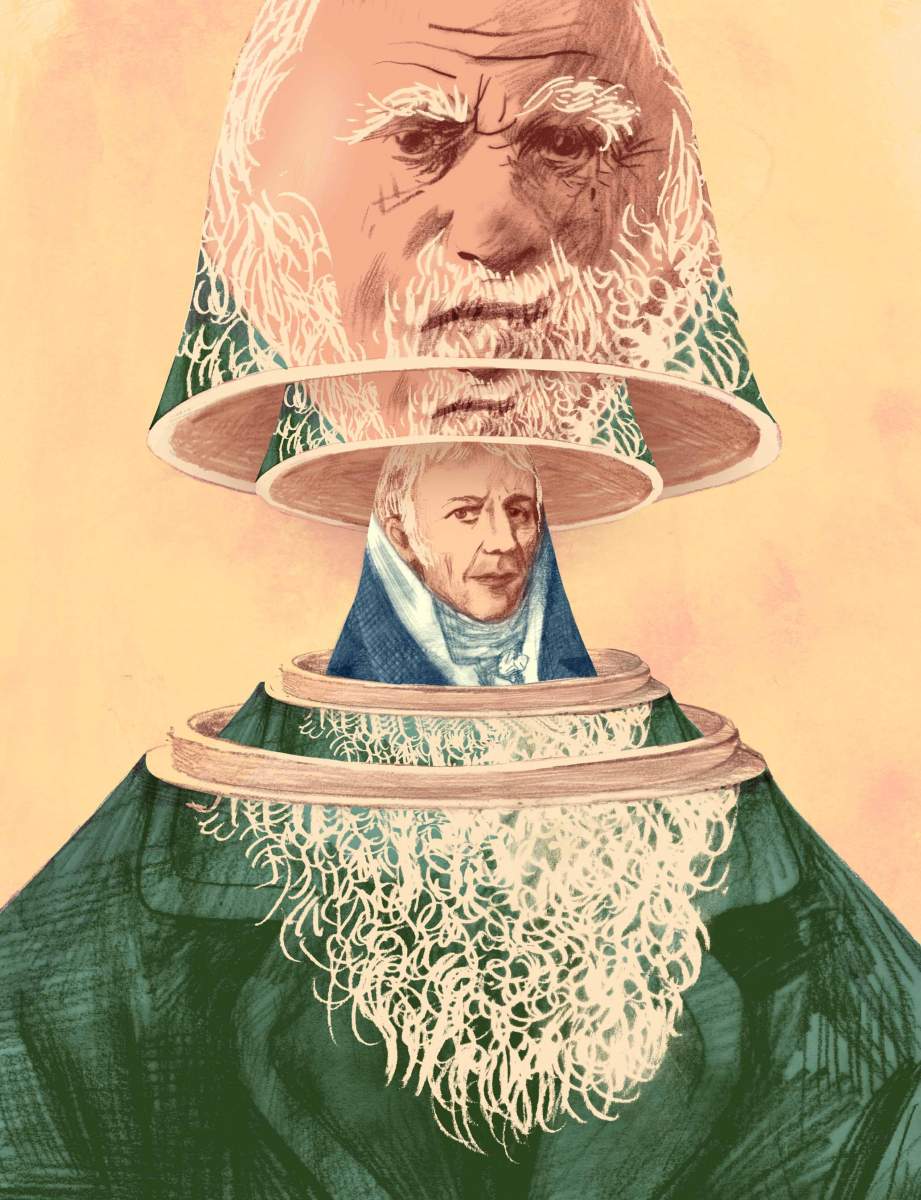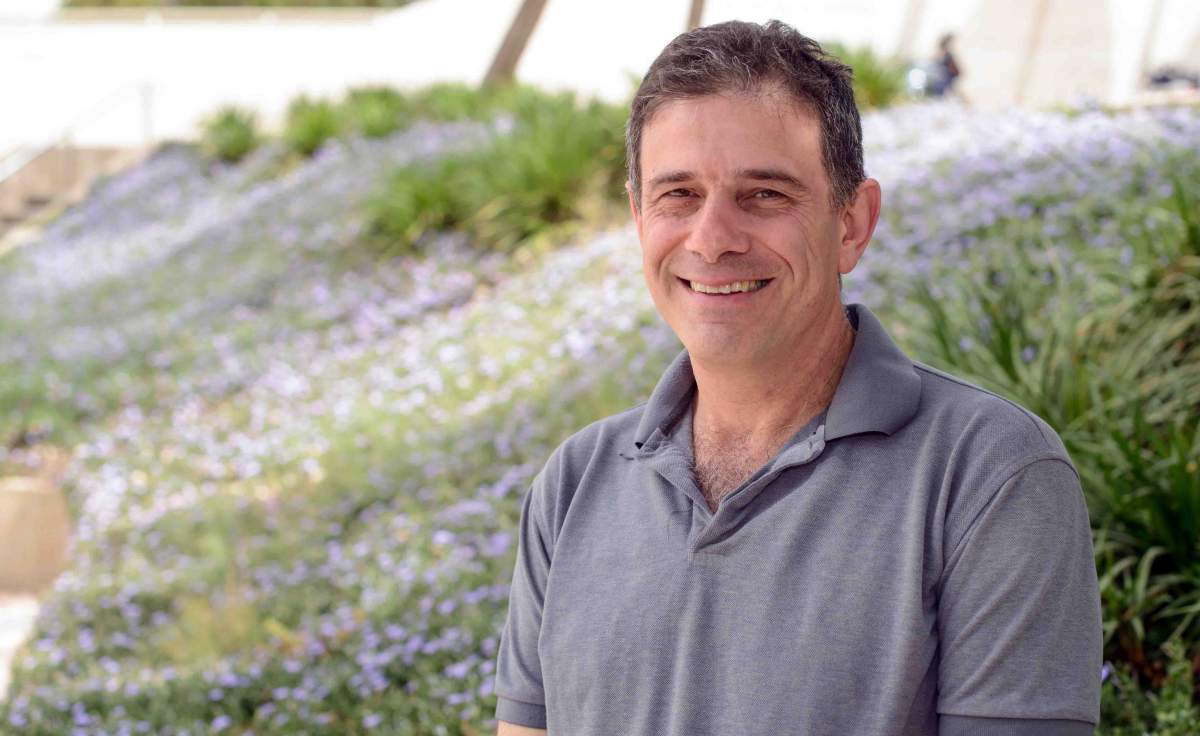עיתונאיות ועיתונאים, הירשמו כאן להודעות לעיתונות שלנו
הירשמו לניוזלטר החודשי שלנו:

Evolution is continual and relentless in shaping all life forms. In his most famous work, Charles Darwin proposed that this amazing process is governed by a simple rule: selection of sufficiently fit individuals, spreading new traits by passing them on to offspring. But some of the scientific findings of recent years tend to complicate that simple picture. Among others is the understanding that every animal (and plant) is not a simple individual, but rather a composite ‒ a host living in symbiotic relationships with a variety of short-lived microorganisms. This begs the question: How do we reconcile the slow evolution of hosts with the much faster evolution of their microorganisms?
Prof. Yoav Soen of the Weizmann Institute of Science and his colleagues from Bar-Ilan University, Prof. Yitzhak Rabin, Prof. David Kessler and Dr. Dino Osmanovic, created a model of this intertwined evolution. Their findings showed that the possible evolutionary outcomes include scenarios that run against some of the most closely-held beliefs, even if one adheres to the commonly accepted rules.
Soen, of the Institute’s Biomolecular Sciences Department, explains that natural selection, as it is understood today, acts by favoring rarely occurring genetic variations that increase the chances of survival and/or reproduction; over generations, the more advantageous variations gradually (and slowly) take over from less beneficial ones. But bacteria, including those in one’s microbiome, with their short lifespans and ability to pass on genetic changes, evolve much faster than their host. That is, bacteria can rapidly adapt to the changes in the host’s internal environment, and in some cases, also to variations in the external environment. Since gut bacteria have been shown to affect human traits as diverse as metabolism and mood, their ability to evolve within a person’s lifetime would influence their fitness in ways that had not previously been realized.
With the help of a microbiome, every host can acquire adaptive traits within its own lifetime and pass the newly acquired adaptation on to its offspring
A single generation for a human (around 20 years) is about 100,000 times longer than that of a single gut bacterium. And each person carries trillions of bacteria undergoing substantial evolution over their lifetime. “How this rapid microbial evolution is fitted into the much more slowly changing traits of humans has confronted researchers with a mind-boggling conceptual gap,” says Soen. The modelling framework adopted by Soen and his colleagues succeeded in bridging this gap by demonstrating how the rapid evolution of bacteria can act in concert with the much slower evolution in their hosts -- to the benefit of both.
Their findings showed that even applying pure Darwinian rules, the co-evolution of host and bacteria can result in adaptive outcomes that would be considered impossible for either host or bacteria evolving on their own. For one, with the help of a microbiome, every host can acquire adaptive traits within its own lifetime and pass the newly acquired adaptation on to its offspring.
This possibility – of acquiring heritable adaptations within a host’s lifetime – resonates with the ideas of the French naturalist Jean-Batiste Lamarck. Though his ideas were supplanted by the concept of slow adaptation by selection of random mutations, the emerging realization of interdependences between host and their microbiomes have recently led scientists to debate the need to revise the basic rules to account for the evolution of host and bacteria as a whole (commonly termed “holobiont”).
The new model, says Soen, provides a sort of compromise, as it builds on assumptions that are agreed upon, namely: Darwinian selection of random mutations, the short generation time of bacteria, the influence of host and bacteria on one another, and transfer of bacteria from host to offspring. Putting these ingredients together led to non-traditional outcomes without having to change the basic rules.
“For example, if a parent is exposed to a toxin, it can adapt by leveraging the rapid changes of its microbiome to produce offspring that are better able to cope with exposure to the toxin. That is a classic Lamarckian effect,” says Soen. By introducing a quantitative measure of this Lamarckian effect, the researchers found that it is surprisingly dependent on both environmental pressure and the traits of the organism. Measuring the Lamarckian effect also revealed that the host’s offspring have more than one way of benefiting from the experience of their parents: For one, they inherit a more resilient microbiome; secondly, they gain bacteria capable of producing and sharing an antidote to the toxin.

When the environmental pressure persisted over several generations, the model revealed an additional twist that is not accepted by many Darwinian purists: group selection. In addition to the regular selection of individual bacteria, the mixed microbial population in the host underwent selection based on the collective traits of the microbiome. “If the collective traits of the bacteria help the host withstand a particular environmental pressure, the microbiome is selected as a whole, together with its host,” says Soen.
The model the researchers developed was a simplified one, and Soen is confident that the consideration of additional factors, including epigenetic changes, will substantially increase the scope and magnitude of the Lamarckian effects. “Adaptation is not just the slow process of waiting for the right gene to come along and for it to be spread through a population,” he says. “It occurs during the lifetime of every individual, continues over longer timescales through the selection of individuals (and groups), and takes advantage of all types of variations (not just genetic ones).”
Prof. Yoav Soen's research is supported by the Dr. Beth Rom-Rymer Stem Cell Research Fund; and the estate of Gabriella Schmidt.